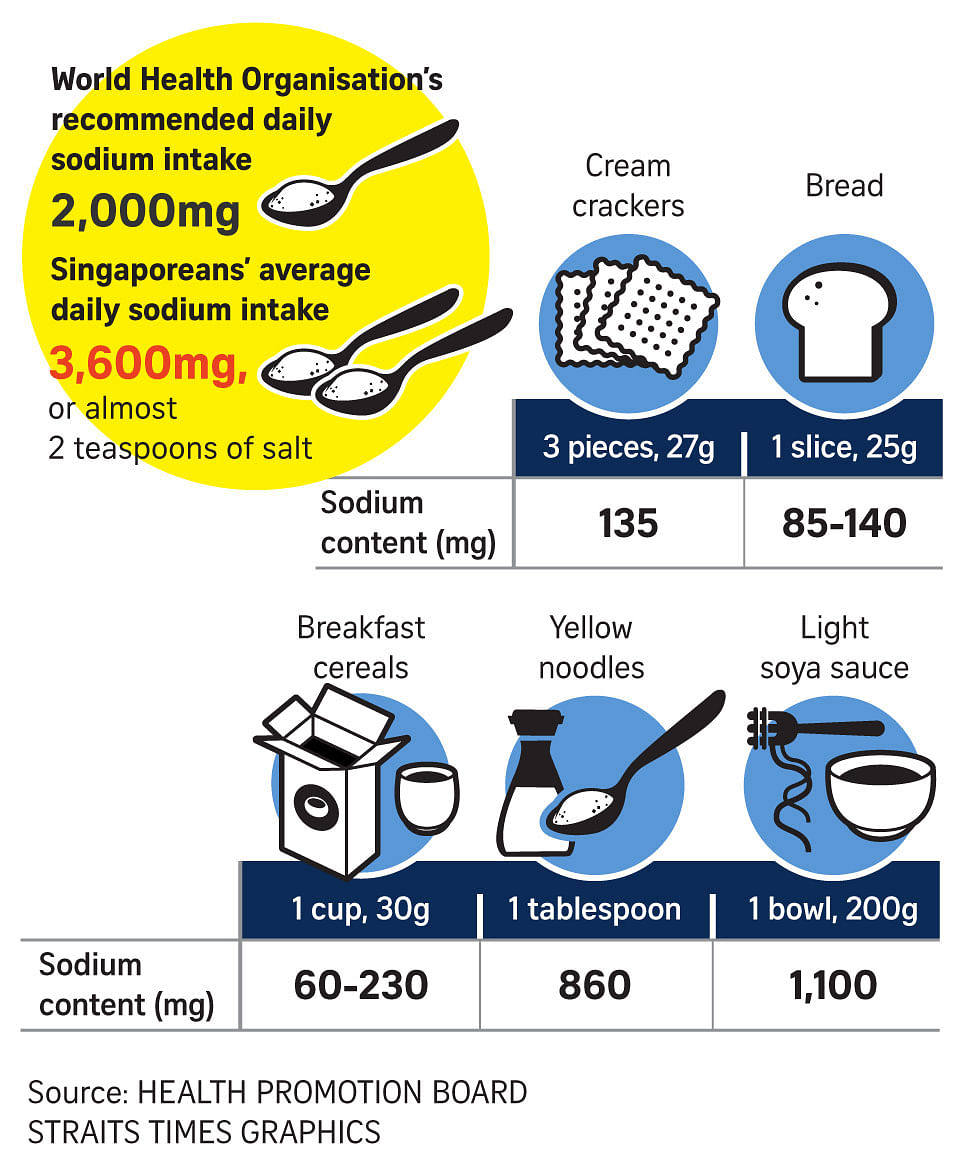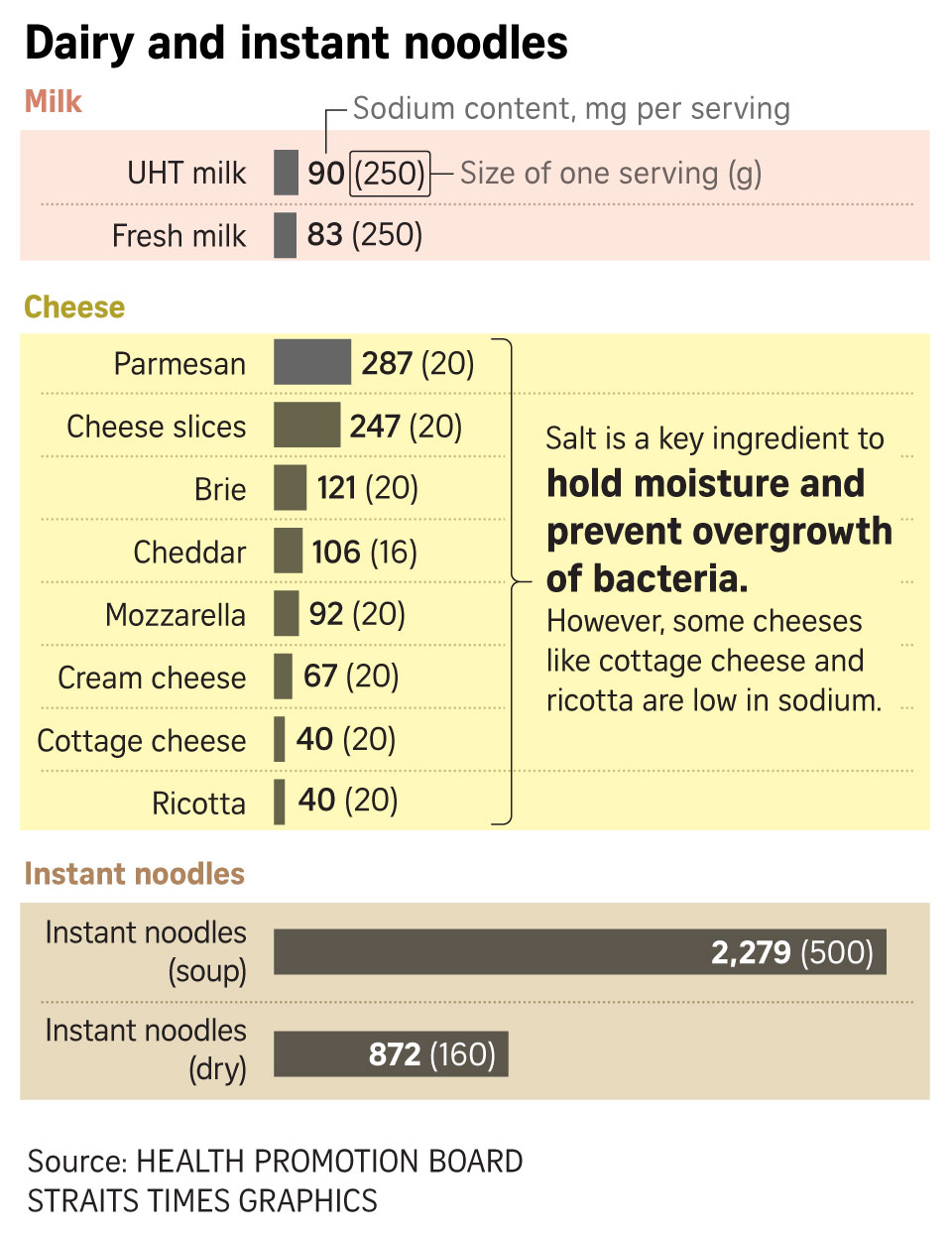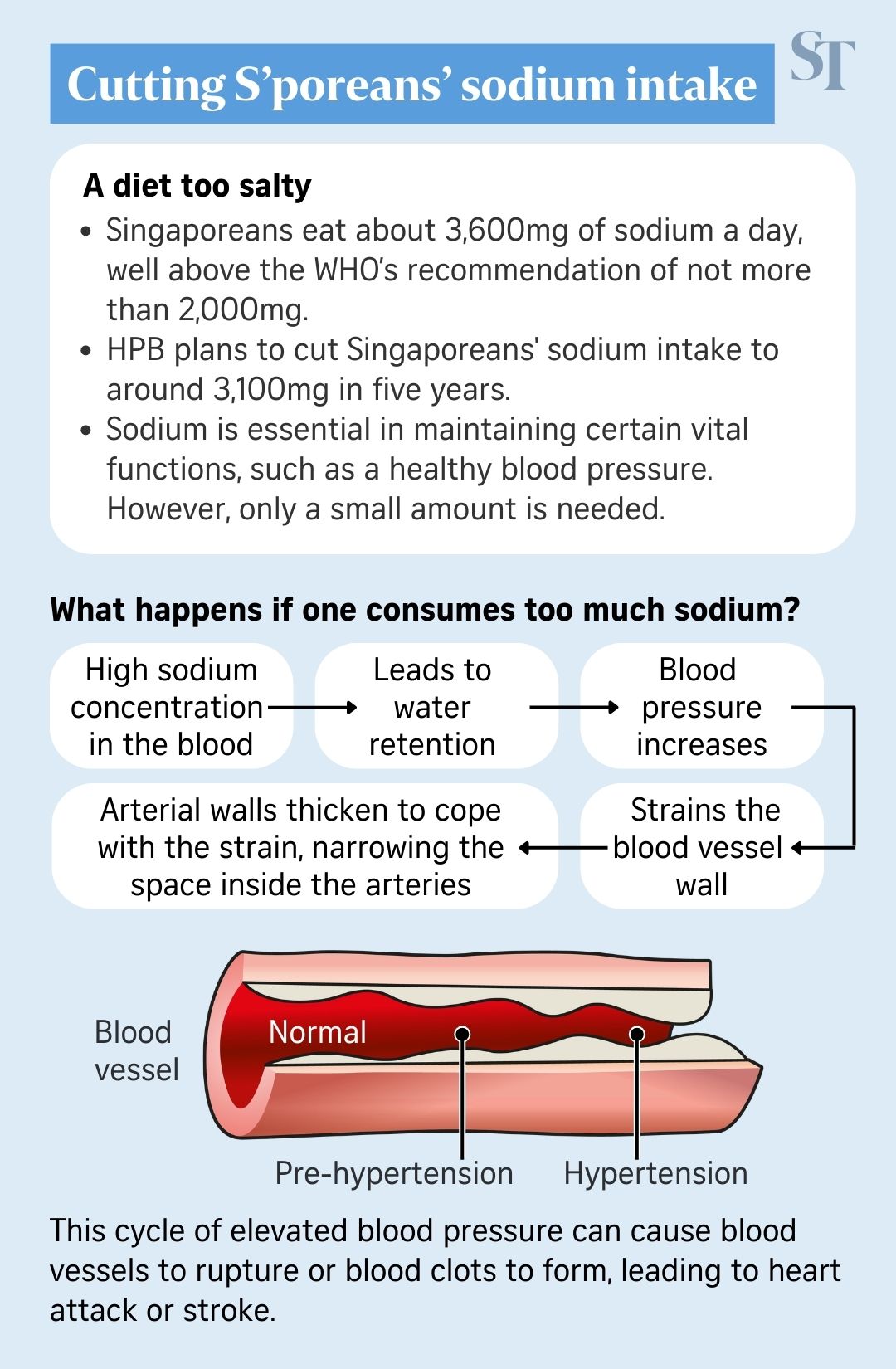About 150 caterers have switched to low-sodium salt, ahead of push to cut S'poreans' sodium intake
Sign up now: Get ST's newsletters delivered to your inbox
Follow topic:
SINGAPORE - Almost 150 catering companies here have switched to low-sodium salt and sauces, ahead of a Health Promotion Board (HPB) campaign to cut sodium consumption in Singapore.
The board will be working with eatery chains as well as hawkers to use the healthier alternative in their dishes as part of its efforts to address an increasing number of hypertension cases here.
Studies have shown that an excessive intake of sodium results in high blood pressure which can lead to heart attacks and strokes.
LPH Catering switched to low-sodium salt and sauces in 2021 under HPB's Healthier Dining Programme, which was started in 2014 to get food and beverage operators, hawkers and coffee shops to offer healthier options on their menus.
Making the switch was "quite a pleasant experience" for the caterer.
"We didn't really need to tweak the recipes," said the company's general manager, Mr Shoan Lee, noting that low-sodium substitutes taste the same as regular salt.
His customers also did not notice any change in taste after the switch, he said, as the company did not receive any negative feedback.
Mr Samsudin Saman, a 55-year-old executive whose employer has been using LPH as a caterer for about seven years, said the food tastes almost the same after the caterer switched to the healthier salt.
In a four-week trial last year involving National Transport Workers' Union canteens and food services firm Sodexo, HPB found that 83 per cent of the respondents did not notice any difference in taste between meals prepared with conventional salt and sauces and those made with low-sodium alternatives.
There was also little difference in the cost of making the meals, which each had about 450mg less sodium. Every low-sodium meal cost about 0.1 cent more than a regular version.
Potassium chloride, which tastes the same as regular salt but contains about 30 per cent less sodium, is usually used as a low-sodium substitute.
A reduction in sodium consumption will lead to a lower risk of cardiovascular disease, said Dr Jasper Tromp of NUS Saw Swee Hock School of Public Health.
Low-sodium salt is safe for consumption, said Dr Tromp, who is co-director of the cardiovascular clinical trial data management centre at National Heart Centre Singapore. Several large-scale studies on salt substitutes found no safety issues, he said.
Mr Samsudin said he has opted for low-sodium salt and sauces in his own kitchen since he was diagnosed with high blood pressure about 12 years ago, as part of efforts to lead a healthier lifestyle.
IMI Lifestyle Products has been selling low-sodium salt for more than two decades. Its managing director, Mr Goh Chiew Seng, said he hopes there will be more demand for such products amid the push to lower sodium consumption.
He noted however that people are creatures of habit and may continue using regular salt as they are used to it.
A person in Singapore consumes an average of about 3,600mg of sodium daily, or more than 1.5 teaspoons of salt. This is well over the World Health Organisation's recommendation of less than 2,000mg of sodium a day.


Low-sodium salt currently makes up just 2 per cent of the market here, said HPB's deputy director of policy and strategy development, Dr Eunice Pang, who added that the board hopes this number will grow in the coming years.
"We are hoping to aggressively grow this to about at least half the market share in place of (conventional) salt," she said.
In a video on his TikTok account on Wednesday, Health Minister Ong Ye Kung, together with Senior Parliamentary Secretary for Health Rahayu Mahzam, attempted to identify dishes made with regular salt from those made with low-sodium alternatives.
Mr Ong was able to correctly pick out a plate of low-sodium fried mee siam, but he was unable to tell biryani chicken made with low-sodium salt from that made with the normal variety.
While low-sodium alternatives may be more expensive, grants and incentives from HPB would make them more affordable for eateries, he said.


